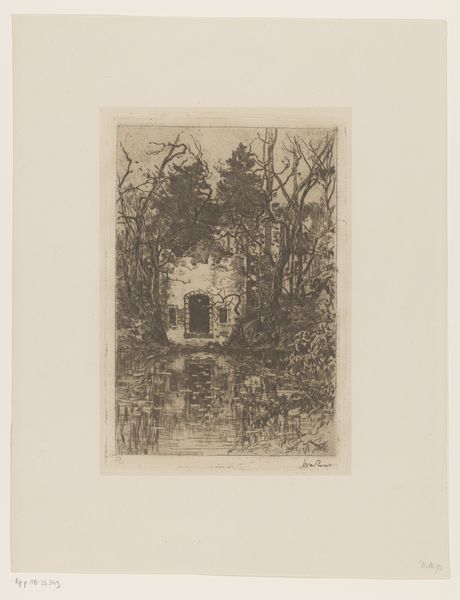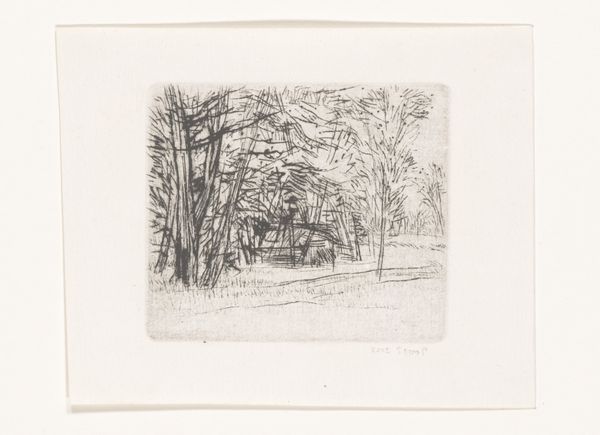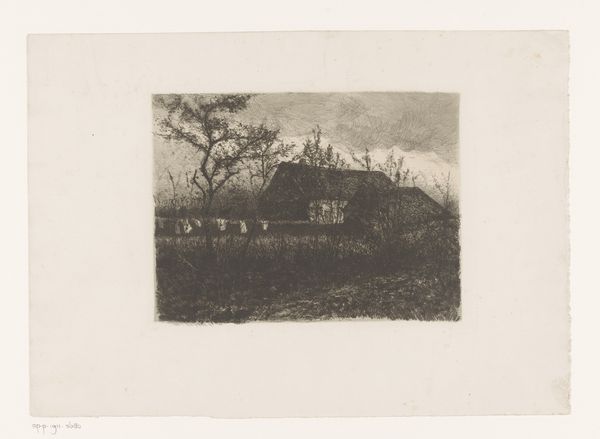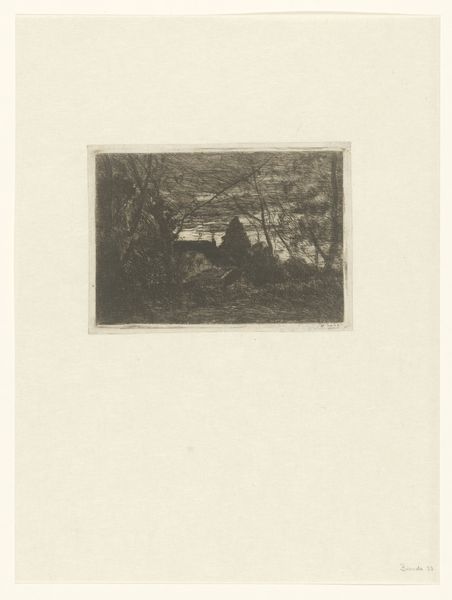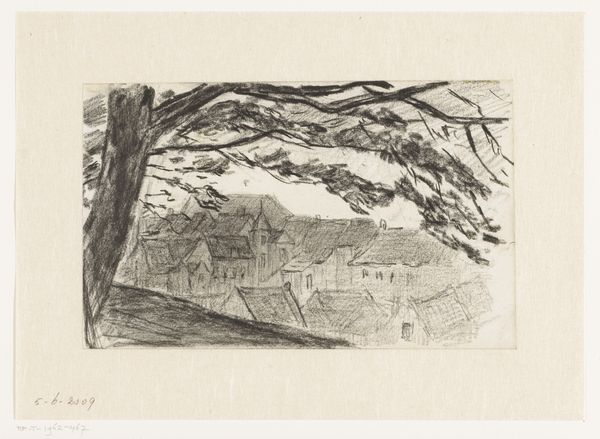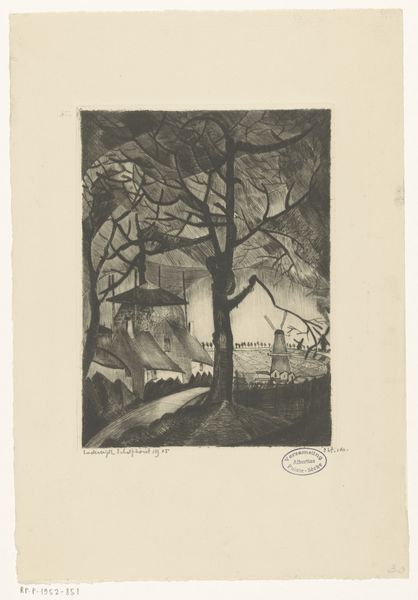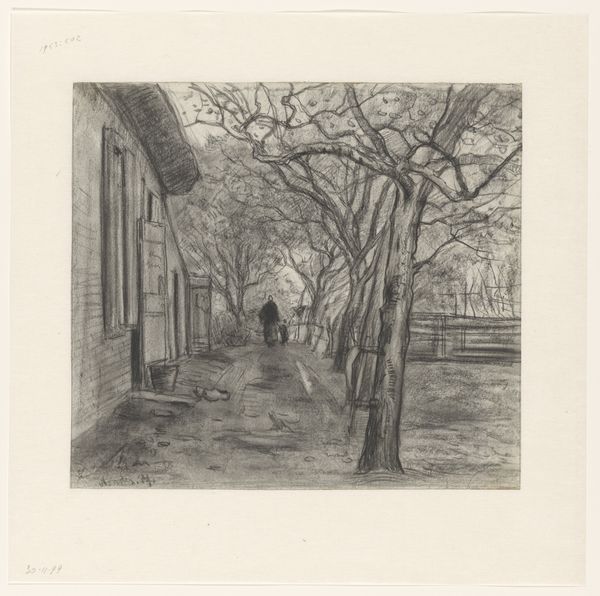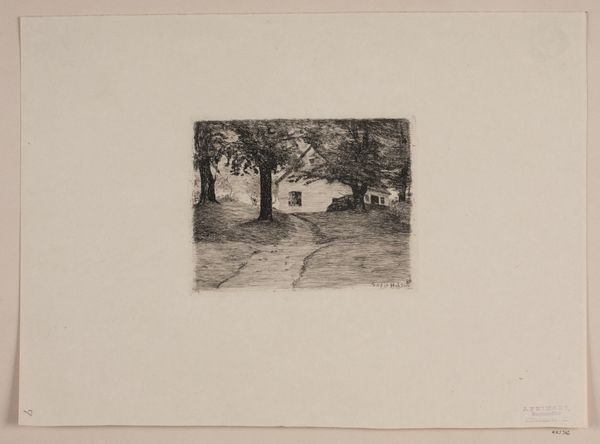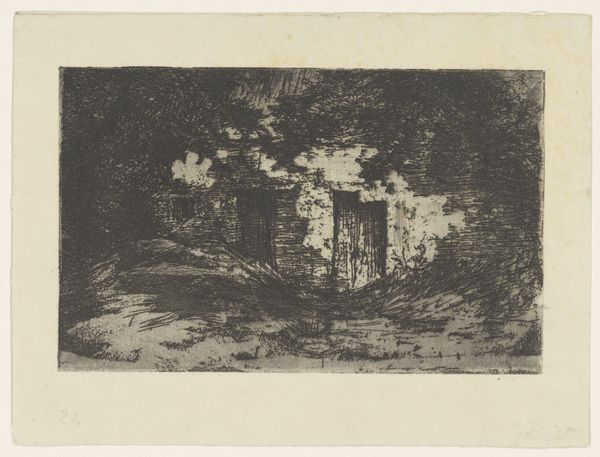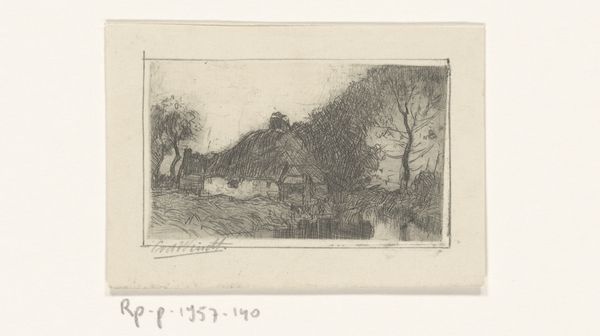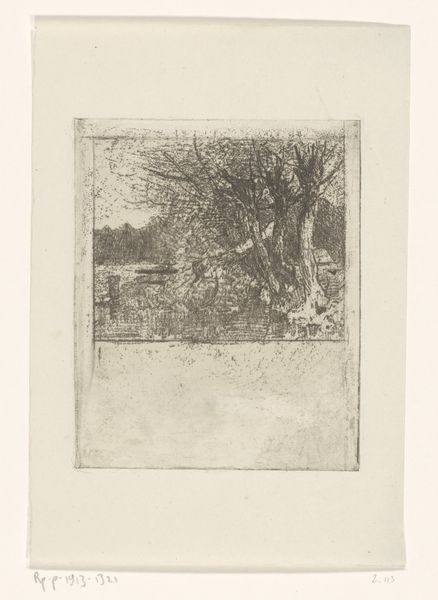
drawing, pencil
#
pencil drawn
#
drawing
#
garden
#
pencil sketch
#
landscape
#
pencil
#
ashcan-school
#
cityscape
#
realism
Dimensions: height 276 mm, width 329 mm
Copyright: Rijks Museum: Open Domain
Editor: This is "Huis," created in 1918 by Simon Moulijn. It's a pencil drawing housed here at the Rijksmuseum. There’s something so tranquil, almost dreamlike, about the soft shading of the house. What strikes you most about this piece? Curator: The enduring symbolism of 'home' itself. Consider the date, 1918 - near the end of the Great War. This seemingly simple image of a house transcends the personal; it becomes an icon of stability, a yearning for safety and peace during immense upheaval. Does the symmetry, or lack thereof, speak to you at all? Editor: Yes, I hadn’t really considered that! Now that you mention it, there is this imperfect framing. The trees aren’t perfectly placed; it’s off-balance, a little unsettling, almost. Curator: Precisely! That slight asymmetry introduces a layer of psychological depth. Perhaps hinting at the subtle cracks in even the most comforting facades. Think about the symbolic weight of a locked or boarded window too - you could almost create an entire story, with archetypal resonance, just through its iteration. What message could those bare branches convey? Editor: Hmm, a new beginning or loss perhaps? So, it’s not just a house, but a vessel for complex emotions and cultural anxieties of its time? Curator: Indeed. Moulijn's skillful rendering invites us to contemplate how we project our own experiences and memories onto such universal symbols, bridging personal and collective memory. This transcends mere architectural representation. What new perspectives on our shared symbolic language have we developed? Editor: It really highlights the power of art to reflect our collective consciousness, transforming something ordinary into a powerful commentary. I won't look at simple sketches in the same way again!
Comments
No comments
Be the first to comment and join the conversation on the ultimate creative platform.
